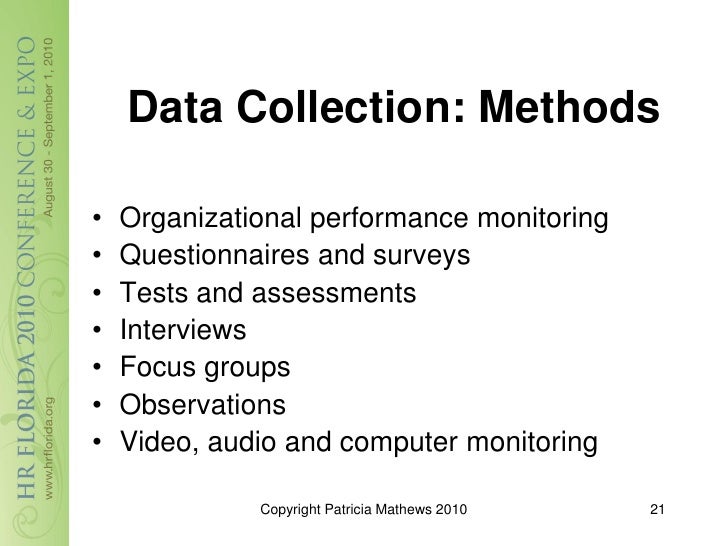

The paper reviews the history of rapid appraisal, provides a definition, discusses the three basic concepts and the illustrative research techniques associated with them, argues for flexibility, and suggests the use of a "Data Collection Checklist" to remind the team of important concepts and as a means by which the reader of a report can estimate the degree of confidence that can be placed in the results. This data collection and analysis technique separates the data so that patterns can be seen and is considered one of the seven basic quality tools. The basic concepts and their related research techniques provide a flexible but rigorous approach for data collection and analysis by a team of two or more individuals, usually with different academic discipline backgrounds. Primary data is collected in the course of doing experimental or descriptive research by doing experiments, performing surveys or by observation or direct communication with respondents.

This paper identifies three basic concepts-(1) a system perspective, (2) triangulation of data collection, and (3) iterative data collection and analysis-and suggests that they provide a conceptual foundation for rapid appraisal and a rationale for the selection of specific research techniques. All can be analysed using a range of different techniques and approaches. The observer can simply write down what they observe or use a video camera. However, the basic tools listed below are not associated with specific analysis methods. Rapid appraisal is an approach for developing a preliminary, qualitative understanding of a situation. The key to successful data collection is to construct easy-to-use forms and collect sufficient and unambiguous data that faithfully represent the source in a. Collectin data through observation can be done in several ways.


 0 kommentar(er)
0 kommentar(er)
